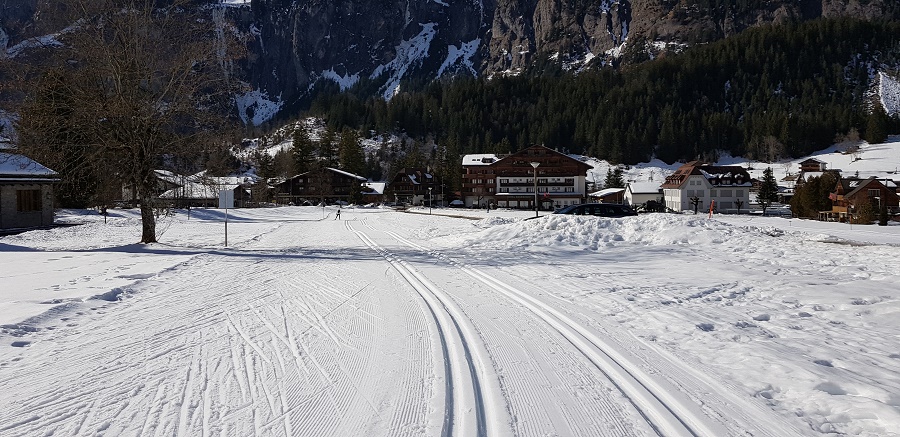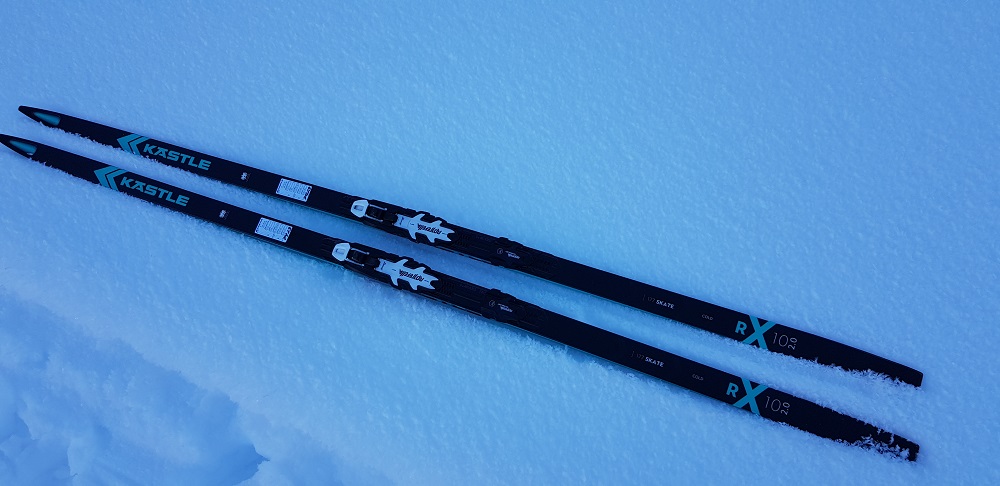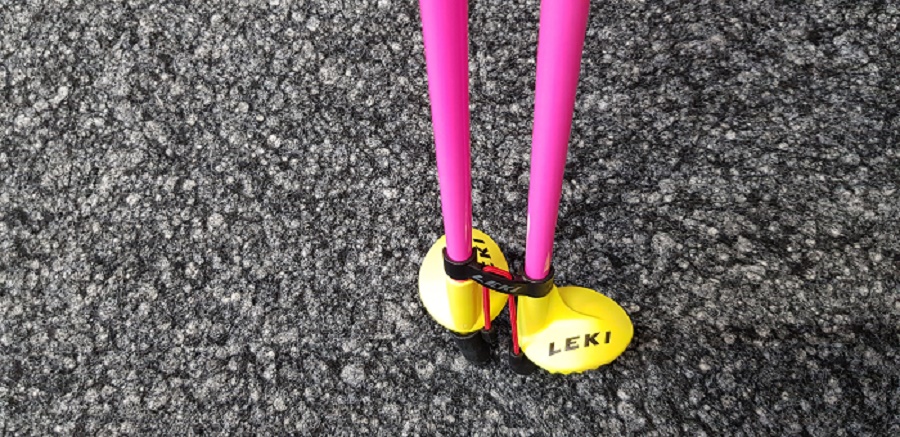- Home
- Ski Waxing
Cross Country Ski Waxing isn't as complicated as you may think
Cross country ski waxing – better to spend more
time training than tinkering in the wax cellar for hours
I find cross country ski waxing rather complicated and for me, it takes too much time. That’s what I hear from some XC skiers, but that isn’t true in most cases!
In all those years as a competing ski racer, I learned one thing above all when it comes to cross country ski waxing.
Less is often more!
In Europe, many recreational XC skiers spend about 20 minutes every evening in the wax cellar. And during that time, they run countless times over their skis in an exemplary manner.
That doesn’t make much sense!
Before a training session, I clean my skis with some wax remover. For skating skis, that’s a fast job and won’t take that long. For classic skis, it takes a bit longer, depending if you have hard wax or the sticky klister on your ski bases.
Then, once the ski bases are clean, I run twice over the skis with my waxing iron and after 5 - 10 minutes I’m done. For a ski race, I spend a bit more time, but for sure not endless hours. I have never spent a lot of time with cross country ski waxing.
Like I said, you need more time to wax your classic skis if you’re applying kick wax. So, depending on the snow conditions, I often use skin skis in warmer temperatures. If it’s colder, I use waxable classic skis, put on 2 to 3 layers of hard wax and I’m finished.
Of course, I understand when a XC ski athlete likes to tinker around with waxing their skis. But at least for me, that was never something I liked a lot.
But the thing is, the more you care for your skis, the greater is the risk of burning your ski bases.
This may be controversial to what most competitors will tell you. But the most important part for fast skis comes before cross country ski waxing.
I tell people new to the cross-country ski racing scene, that first comes the ski flex and then the ski structure. And only after that, you look for and apply the right cross country ski wax.
The biggest
difference between you and an elite XC ski professional
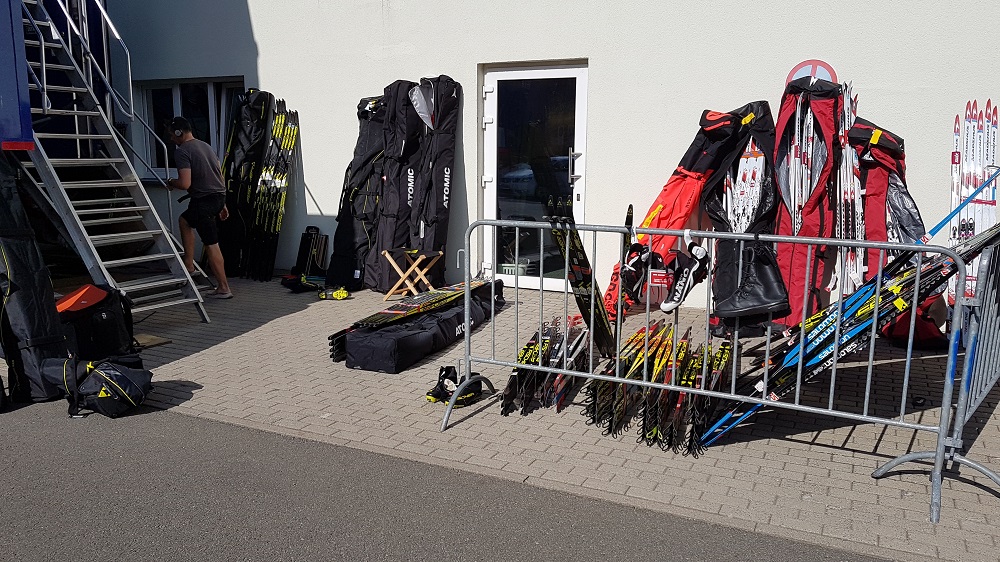 After training in the ski tunnel in Oberhof, Germany, these cross country race skis some more wax for better glide
After training in the ski tunnel in Oberhof, Germany, these cross country race skis some more wax for better glideThe biggest difference is that the top cracks have over 40 pairs of skis for different snow conditions. while you may have only one or two pairs. Well, some elite Masters may have as many as 10 pairs of skis, which they have accumulated over the years.
So, it makes sense to get two different ski flexes. One pair of skis for cold snow and the other for warmer snow conditions.
Otherwise, there are no secrets!
Even the top XC ski cracks have not more resources than you. With the exception that the temperature change of the waxes are more precise.
Depending on your experience and cross-country ski waxing know-how, you may have a blue, purple, red, and yellow ski wax.
And if you live in a colder region, you have used a green and a polar wax for very cold snow conditions. Elite XC and ambitious recreational skiers have a wider range of different ski waxes. But that’s pretty well it.
But the deciding factor is that the cross-country ski waxing gurus have so much experience on how to mix the waxes for fast gliding skate skis.
The biggest challenge with cross country ski waxing are rapid changing snow conditions
Rapid changing snow conditions have always been the worst for ski waxers. This is the time when they can't predict the weather, and that’s when the ski technicians flip out.
They scan careful over old data, looking for a similar solution. That means close to the temperature, humidity, and elevation. And then they hope to find a mixture of ski wax and a base structure that works.
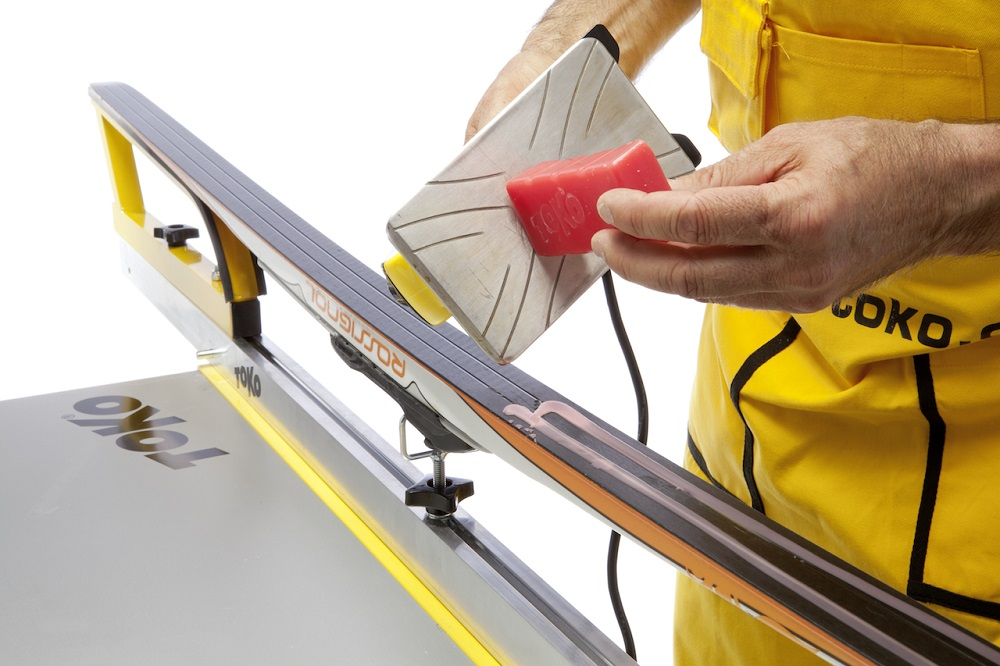 A Toko wax technician hot waxing cross country skis at a Swiss loppet ski race
A Toko wax technician hot waxing cross country skis at a Swiss loppet ski raceFor a Classic style 50k cross-country ski race, they need a combination of kick and glide wax . And this wax needs to work over a two-hour weather change. At the same time, it also needs to resist picking up dirt along the racing course.
The fluoro-based ski waxes used for ski competition have a high water and oil repellency. These waxes repel snow, dirt and chemical agents used to treat the snow.
At the same time, fluoros also create a low-friction contact between the snow and the ski base. Thus it makes the base of the ski faster.
Note: Please note that fluoro-based ski waxes are banned by the FIS since the 20/21 ski season. And for good reason, for the environment, the high cost and for you, the waxer.
So in the future, you will most likely use a CH or a hydrocarbon ski wax, which is going to do a baseline job of repelling water. It makes no difference, as long as everybody has fluoro-free waxes on their bases.
How much faster is a good waxed Cross-country ski
In World Cup XC ski races, a pair of perfect waxed skis can be about 2 percent faster than bad waxed skis.
That means that if you would take part in the Engadin Ski
Marathon, you could gain between 5 to 10 minutes with the right ski material.
You could lose even more time such as at the Birkie, because the race-course is longer and with lots of hills and also depending on the style used.
Of course, the time saved is enormous, but for training purposes, you can do without those expensive waxes. So yes, there is a big difference between a super waxed and a bad waxed ski.
Are there any Cross-country ski waxing Secrets?
In general, I find that people think too much about waxing their skis. Elite XC ski athletes often say that many masters would better train an hour more than stand in the basement to prepare their skis.
I too must smile about the countless myths about ski waxing. For example – the waxing powders that many believe make their skis so super-fast.
They make perfect sense when the snow is warmer than minus 3 degrees Celsius – otherwise it’s better you save your money.
I never use the yellow soft wax because it doesn’t do anything. On the contrary, it sucks up a lot of dirt into the skis bases when cross country skiing. Go and ask the waxing experts of National cross country ski waxing teams and they will tell you that they almost never use yellow wax.
In ski courses, the first question that often comes from participants is – are there any waxing secrets today? And sometimes, I have to smile because there aren’t any.
- Home
- Ski Waxing
